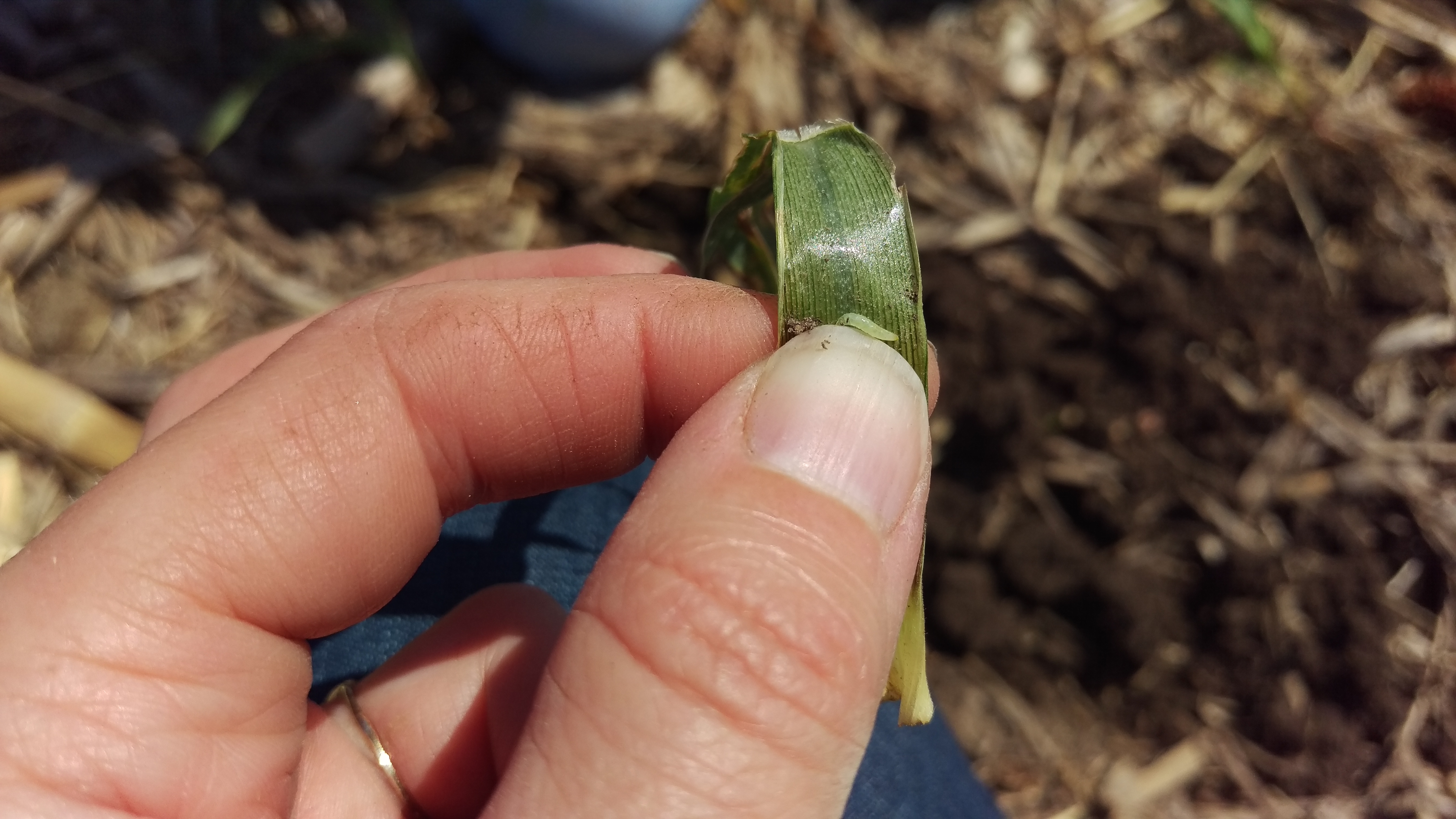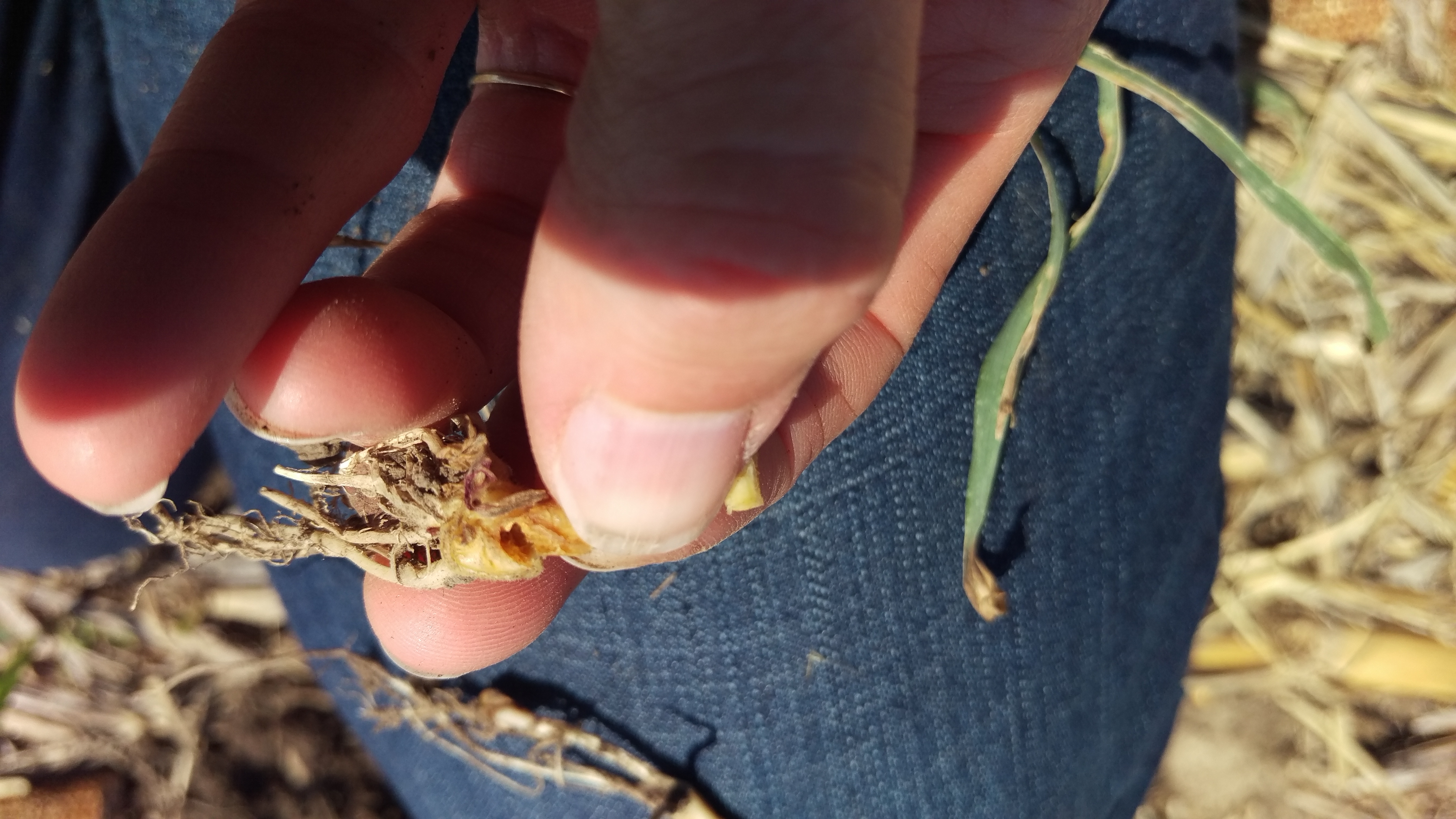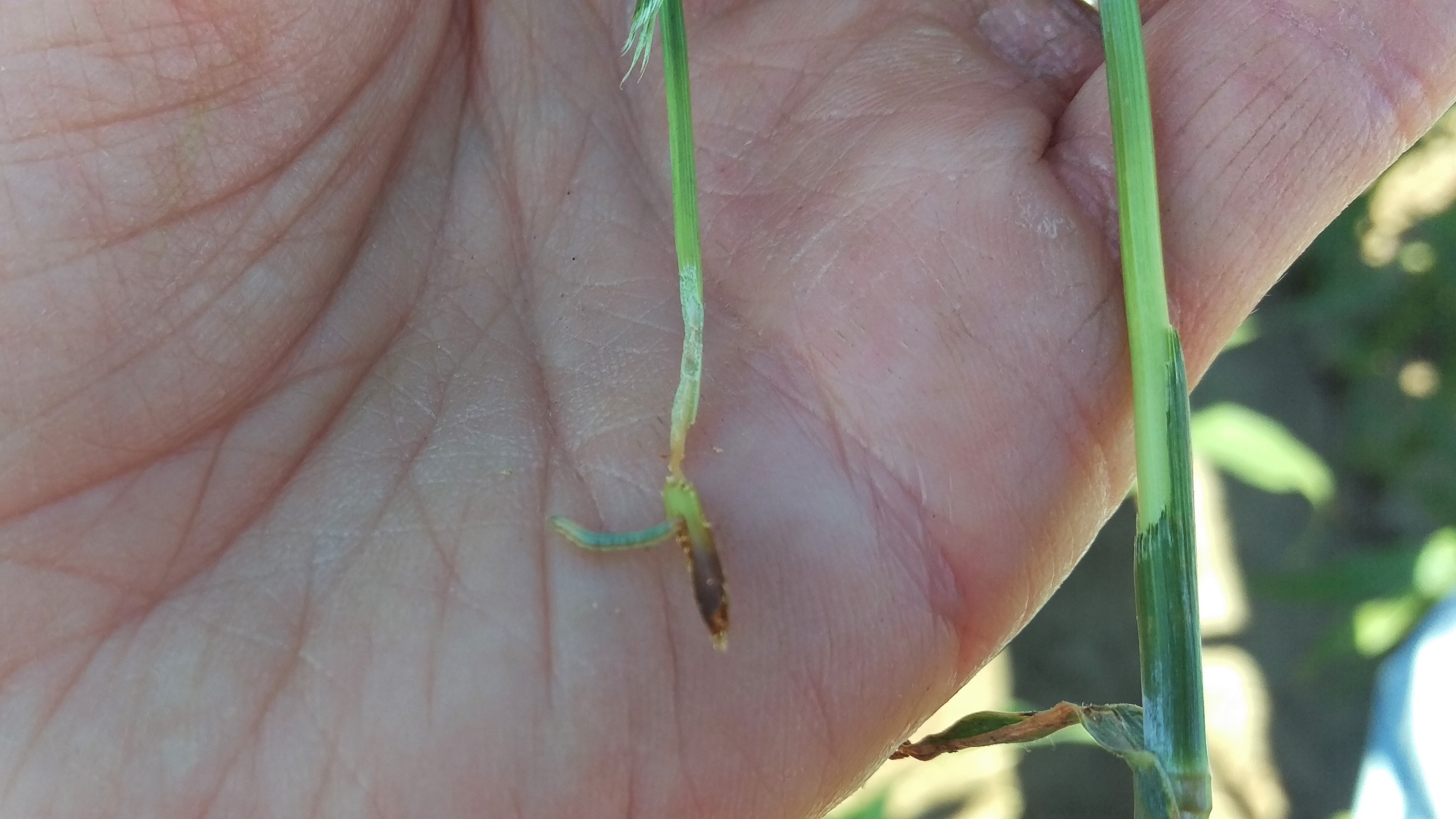Blog Archives
JenREES 6/13/21

The linden trees are in full bloom and their fragrance is incredible!!! Last week I was out of the office with family, so didn’t get to check fields but heard from some of you who provided me updates on what you’re seeing. Corn is rapidly growing and closing the canopy. A few have reported early planted soybeans are already flowering. The corn planted into cereal rye looks more yellow right now, which is to be expected with the nitrogen being tied up by the rye. It should start releasing the nitrogen shortly. I realize it doesn’t always look as good right now; my experience has been that it will turn around come July and hopefully that continues to be the case.
With the post- herbicide applications being made, have heard/seen comments about waterhemp/palmer in fields with corn or soybean planted into rye. There is no silver bullet for weed control and cover crops aren’t one either, but they do greatly help in weed suppression and are another tool in our toolbox for a system’s approach. In previous weeks of walking fields, waterhemp and palmer tended to appear in areas where rye was thin and in endrows, otherwise the fields were fairly clean. In many green-planted soybeans, the rye formed a really nice mat to suppress weeds. Also, each field situation can be different. Some growers did a second pass with their residual after killing the rye. It stinks to do this but some have had more success in waiting to apply residual to better allow it to get down to the soil. Some added their residual to the burndown on tall rye (greater than 12-18”) and, depending on the product and its water solubility, the product may not have gotten to the soil yet. With this second scenario, there’s also differences when some used more water-soluble products, or applied prior to a good rain/applied irrigation, as these seemed to have better results with their residual products.
It has been hot, but it’s also been very humid, so crops aren’t using as much water as one thinks. That’s where having an ET gage or viewing ET information can be helpful. The CropWatch website is one resource for this information at: https://cropwatch.unl.edu/et_resources.
There’s also been concern about weather conditions and potential for temperature inversions. Al Dutcher shared the following, “If skies are clear and there is no wind at sunrise, it is a guarantee that an inversion is in place. Dew formation is another tell-tale sign (although during droughts dew may not form). When the high pressure is directly overhead, the inversion can last up to 4 hours depending on time of the year. During the summer it is lessened due to intense solar radiation early in the morning as compared to April and early May. Operators should be taking a temperature measurement at canopy height and at least 8 feet in the air to see if the inversion is still in place at the surface. A smoke bomb serves as a secondary control as the inversion may have lifted at the surface, but still exists above 8 feet (happens a lot in river valleys). The smoke bomb will rise up and if an inversion layer still exists higher up, the smoke will flatten out and drift sideways. If no inversion exists, the smoke will rise up and dissipate with height.” A great resource on temperature inversions from North Dakota State can be downloaded as a PDF here: https://www.ag.ndsu.edu/publications/crops/air-temperature-inversions-causes-characteristics-and-potential-effects-on-pesticide-spray-drift.
Light Trap Data for four Nebraska locations can be viewed at: https://entomology.unl.edu/fldcrops/lightrap.
Interseeded Cover Crop Driving Tour: If you’re interested in what we’ve been doing with interseeding cover crops into corn and soybeans, please save June 29th for a driving tour of some on-farm research fields! We’ll begin in Clay County and move to Hamilton, York, then Seward counties. I will share details next week. Essentially, I will provide the start time we’ll be at each field and you’re welcome to meet us there for one location or as many as you’d like. We’ll only plan on being at each location for 30-45 min. before moving to the next one. Will provide time for people to grab some lunch wherever you prefer in York before hitting the Seward county fields.

End of news column.
For fun: for those who have followed me a long time and/or know me/my family better, I arrived at the farm last Sunday afternoon to a 16 person water fight; also had another precious niece arrive this past week 🙂 May we enjoy our families and take time for these moments in our lives as time goes so quickly!


Corn Concern in Wheat/Rye Cover

What we see is larger plants next to stunted or shorter plants. The smaller plants often show some type of ‘flagging’ of the leaves where one or several leaves or sometimes the whorl is brown and wilted. Upon digging these plants, the roots were healthy and there were no symptoms of damping off or other obvious disease issues. While there have been reports of some wireworms, this also hasn’t been the main issue with these plants I’ve been seeing.

John Mick with Pioneer alerted me to what he was seeing and several of us have since found the same. Carefully unrolling leaves from the stems of these plants revealed feeding on the stems and crown area. You can see from this photo the small larva of what we believe to be wheat stem maggots (top leaf). I’m finding from 1-3 per plant (on this plant there were more in the disfigured area of the stem). I’m also noticing some plants that are tillering such as is shown in this photo after they’ve been damaged.

The larva in another plant.

The growing point area of the same plant.

Carefully unroll the leaves to reveal any potential larvae.

Also found wheat stem maggot in some rye stems from rye that didn’t completely die. White heads in wheat and rye can be an indication of their feeding. You can then pull on the head and easy removal reveals where the maggot was feeding.
So two questions:
- Why are we seeing this this year?
- Is there anything we need to do?
The short answer to both is that we really don’t know. Perhaps one hypothesis is our warm winter allowed for an earlier generation of wheat stem maggots to pupate and emerge as flies during corn planting when they would typically do so later in May. Perhaps in fields where wheat or rye wasn’t yet terminated, the flies could lay eggs and the larvae that hatched moved from the wheat or rye to the corn upon emergence and once the cover was terminated.
The larvae we’re finding now are in different stages and some are getting close to pupating. After pupating, they will emerge into flies that will lay eggs in grass crops. We don’t know for certain if the flies will lay eggs in these corn fields again or if they will move to other grassy species. We’re not recommending insecticide applications.
South Dakota State and Kansas State have previously reported rare incidences of this occurring in corn. This is my first time observing this in Nebraska. To date, I’ve seen stand loss range in fields from 5-50%.
This doesn’t mean that all potential stunted plants or stand concerns are due to this particular insect as a number of other factors could be involved. This post is intended to increase awareness of another option to look for with the number of questions I’m receiving right now regarding corn concerns in terminated rye or wheat cover.
Dr.s Justin McMechan and Bob Wright are surveying fields and conducting studies to better understand any potential concerns in future years. We will keep you informed as we continue to learn more.

